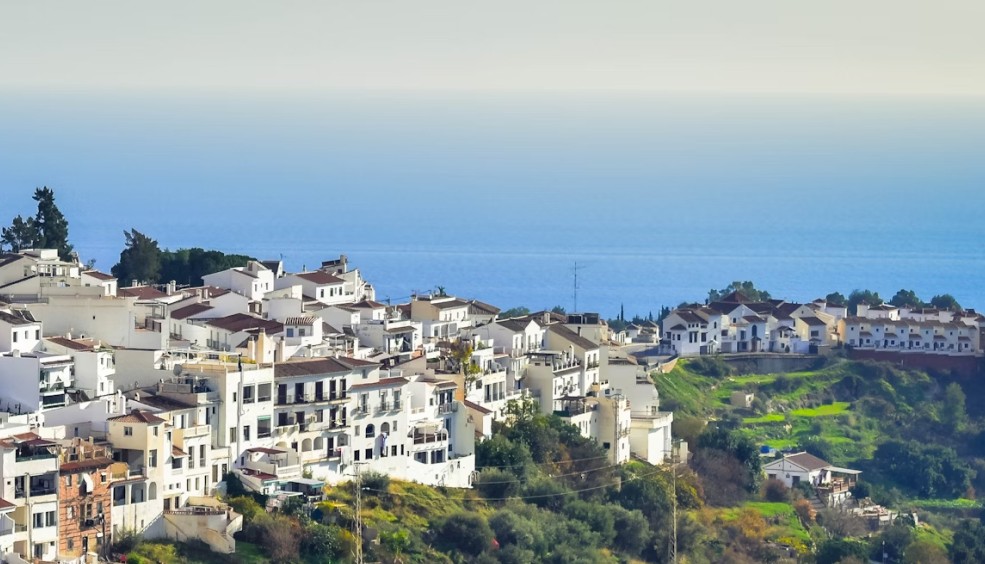Nine reasons to visit Tenerife at any time of the year
Volcanoes, nature, sport, gastronomy, tradition, architecture… It would be difficult to find another destination offering as much as Tenerife, whose privileged situation also makes it a perfect island to visit at any time of the year.
more infoThe best white towns in Andalusia to enjoy autumn
Enjoy autumn in Andalusia by visiting white towns like Ronda, Grazalema, Mojácar, Frigiliana, Vejer de la Frontera, Zuheros, Arcos de la Frontera and Cazorla. Narrow whitewashed streets, breathtaking viewpoints, local food, nature and lots and lots of art.
more infoDay of the Canary Islands: 10 places not to be missed
Urban beaches, idyllic little coves, rolling hills, mountainous landscape, lunar landscape, sunsets, forests, mountains, fairy-tale paths and friendly locals. The Canaries have it all!
more infoThe Ria de Muros e Noia , the Port of Santiago de Compostela
The Ria de Muros e Noia is one of the Galicia region’s least built-up coastal areas, and also one of the most beautiful. Fishing boats landing delicious, shellfish, white sandy beaches with good surfing, all framed by green hills with a riot of vegetation –it’s definitely worth a visit. Here is a route you might consider.
Mt. Louro and the Xarfas Lagoon
Starting from the northern extreme of the estuary, between the Costa da Morte and Muros, you can stand atop Louro mountain, a 241-metre high granite block, and feast on the views of the Ria de Muros e Noia and the Lagoa de Xarfas with its fabulous Area Maior beach. The surrounding –hills, dunes, beach and the lagoon—boast a wealth of flora and fauna. There’s even an observatory for watching migratory birds.
Muros
Heading south we come to the town of Muros, founded in the 10th C. , and now featuring modest fishermen’s houses next to lordly mansions from bygone times. A stroll the town in the late afternoon can be timed to coincide with the arrival of the boats in the evening after a day’s fishing. The fish is put up for sale immediately on the dock, which is also an interesting spectacle to watch. And it means your shellfish dinner will be fresh and delicious. You won’t be disappointed by any of the restaurants under the arches near the water’s edge.
Just three kilometres away on the road to Noia is the Muíño de Mareas do Pozo do Cachón, a flour mill powered by the tides, built in the last quarter of the 19th C. There is also an interesting museum.
Noia
Noia is the biggest town in the estuary, and is only 36 km distant from Santiago. According to tradition, it was named for Noah, who is believed to have settled there after the Biblical flood. The city’s coat of arms shows an ark and a dove bearing an olive branch.
The old quarter features two churches built in the local version of the Gothic style: San Martiño (15th-16th C.) and Santa María a Nova (14th C.), the latter with a fascinating collection of about 500 tombstones. The 16th C. convent of San Francisco may also be visited, and the town is replete with stately mansions, such as the Casa da Xouba, the Pazo Dacosta (or Casa de Rivas), and the Pazo Forno do Rato. In the Obre district the pazos (mansions) of Pena de Ouro and Bergondo are worth a visit.
Some five kilometres from de Noia, across the Tambre, we come to the Ponte Nafonso, a bridge built during the 12th C. reign of King Alfonso IX of Leon and Galicia. It consists of a score of pointed arches lying on granite ashlars. The setting against the sea and mountains makes the sight of the bridge all the more spectacular
Castro de Baroña
On the south side of the estuary, next to the fishing village of Porto do Son, is the Castro de Baroña, an Iron Age Celtic settlement, with a score of round or oval stone cottages, once thatched, on a small peninsula. The archaeological remains and the wonderful landscape make it a worthwhile visit.
Corrubedo Dunes Nature Park
Between the Ria de Muros and Noia and that of Arousa, to the south, lies this lovely park with beaches, dunes, fresh- and salt-water lagoons, wetlands, and even megalithic remains. One of the main attractions is the “moving dune”, a restless pile of sand about a kilometre long , 200-300 meters wide, and 20 metres tall.
Some Further Recommendations
Though the quickest way to explore the Muros and Noia estuary is by the AC-550 coast road, we recommend side trips into the surrounding hills to get the best views.
For lodging there are numerous country inns and guest houses on both sides of the water, most of them in old and typical buildings. A particularly unusual place to stay is the hotel Pesquería del Tambre, in the Tambre river valley on the site of and old hydroelectric dam transformed into a nature hotel by the architect Antonio Palacios.
Check out our flights to Santiago de Compostela and head west to the sea!
Text: Isabel y Luis Comunicación
Pictures: Turismo de Galicia
more info




